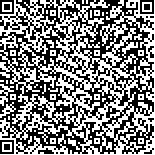| 摘要: |
| [摘要] 目的 开发和评估基于深度学习算法的自动识别角膜共聚焦显微镜(in vivo confocal microscopy,IVCM)图片中角膜炎细胞的智能辅助诊断系统。方法 纳入广西壮族自治区人民医院眼科感染性角膜炎患者IVCM图像。采用ResNet101卷积神经网络构建智能模型。使用5倍交叉验证的方法对模型的效能进行检验,计算模型准确度、特异度和敏感度评估该智能辅助诊断系统的识别真菌菌丝、炎症细胞、活化的树突细胞的效能。结果 该研究共纳入2 105张图片,经交叉验证,该模型识别真菌菌丝的准确度为0.974,特异度为0.976,敏感度为0.971。识别炎症细胞的准确度为0.993,特异度为0.994,敏感度为0.990。识别活化的树突细胞的准确度为0.993,特异度为0.994,敏感度为0.990。结论 该研究自主研发的基于深度学习算法的智能系统可有效地将共聚焦图片中的角膜炎异常细胞进行自动识别,在识别多种IVCM图像的角膜炎细胞中表现出良好的诊断效能。 |
| 关键词: 人工智能 残差网络 深度学习 角膜炎 共聚焦显微镜 |
| DOI:10.3969/j.issn.1674-3806.2020.02.03 |
| 分类号:TP 18 |
| 基金项目:广西医疗卫生适宜技术开发与推广应用项目(编号:S2019084) |
|
| Study on the intelligent recognition of inflammatory cells in in-vivo confocal microscopy images of corneas based on deep learning algorithm |
|
LYU Jian, CHEN Qi, ZHANG Kai, et al.
|
|
Department of Ophthalmology, the People′s Hospital of Guangxi Zhuang Autonomous Region, Nanning 530021, China
|
| Abstract: |
| [Abstract] Objective To develop and evaluate an intelligent assistant diagnosis system based on deep learning algorithm for automatic recognition of corneal in vivo confocal microscopy(IVCM) images. Methods IVCM images of the infectious keratitis patients in the Department of Ophthalmology, the People′s Hospital of Guangxi Zhuang Autonomous Region were included. ResNet101 convolution neural network was used to build the intelligent model and the effectiveness of the model was tested using a 5-fold cross-validation method. The accuracy, specificity and sensitivity of the model were calculated and were used to evaluate the ability of the intelligent assistant diagnosis system to identify fungal hyphae, inflammatory cells and activated dendritic cells. Results A total of 2 105 images were included. The cross validation showed that the accuracy, specificity and sensitivity of identification of fungal hyphae were 0.974, 0.976 and 0.971, respectively, and those of identification of inflammatory cells were 0.993, 0.994 and 0.990, respectively, and those of identification of activated dendritic cells were 0.993, 0.994 and 0.990, respectively. Conclusion The intelligent system based on deep learning algorithm developed in this study can effectively automatically recognize the abnormal keratitis cells in the confocal images, and has a good diagnostic performance in identifying the abnormal keratitis cells in a variety of IVCM images. |
| Key words: Artificial intelligence Residual network Deep learning Keratitis In vivo confocal microscopy(IVCM) |

